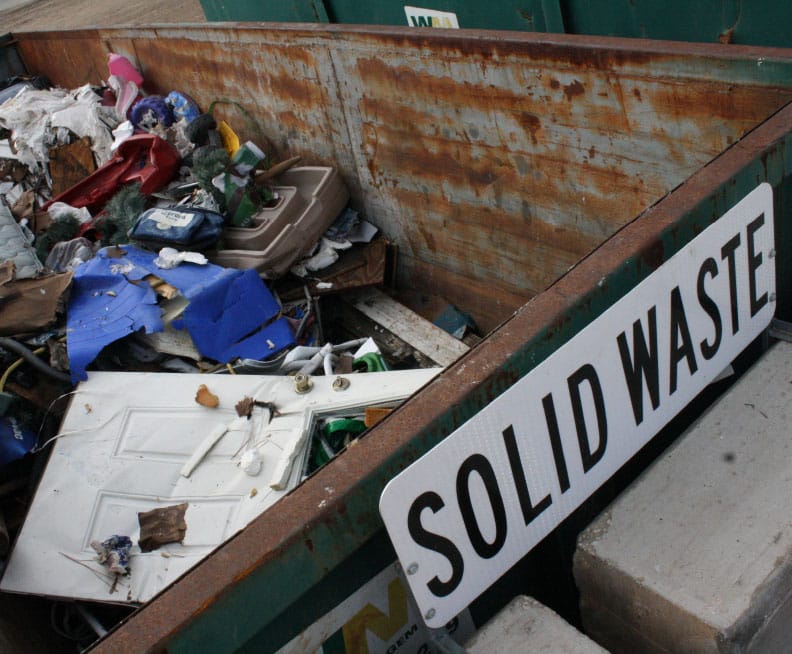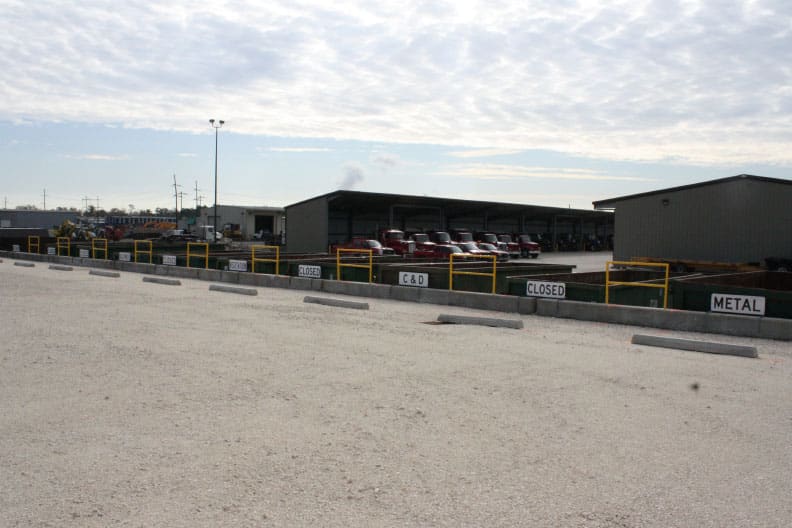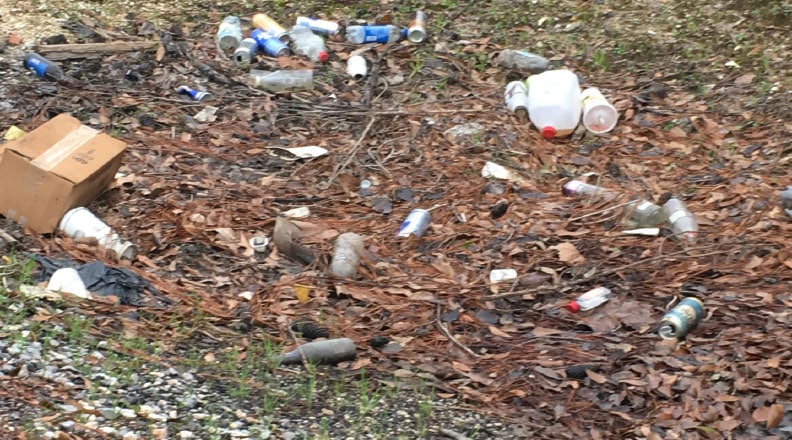Litter In Calcasieu Parish Costs Millions A Year You’re Picking Up The Tab.
By Brad Goins
The opinion of those in the know is that littering on the area’s roadways has gotten worse in the last couple of years. There are many possible explanations. But one culprit we can point to with certainty: the number of drivers on the roads.
The big increases in littering are “primarily due to extra vehicular traffic,” says Calcasieu Parish Police Jury Communications and Media Director Tom Hoefer. He says that 95 percent of the littering in the area comes from drivers or passengers in vehicles. And with more jobs, more workers and “more commerce going on,” the number of cars on the roads is definitely increasing.
Jeff Jones, director of Public Works for the City of Lake Charles, says that in 2018, the city saw an increase of 27 percent in the amount of litter collected by its litter abatement crews.
If you think the amount of littering is going to be ratcheted down by the standard workings of law enforcement, city and parish officials and the justice system, you may need to lower your expectations quite a bit.
“[We in the CPPJ] don’t get anything substantial from fines,” says Hoefer. “So few litter citations are issued it’s not really a consideration.” In the enormous area of Calcasieu Parish, fewer than 50 citations are issued each year. What money is collected from fines is split up between the District Attorney’s office, the Sheriff’s Office and the Police Jury.
“We have very limited resources to enforce litter laws,” says Hoefer. Cities and parishes can’t afford to hire “litter cops” whose job is to drive around catching people in the act of littering. If such police officers did exist, they wouldn’t see much. “People don’t litter when a policeman is behind them,” says Hoefer.

A local resident discarding trash at the Calcasieu Parish Residential Solid Waste Convenience Center on Swift Plant Rd. in
Lake Charles.
Many people don’t realize that it’s illegal to throw cigarette butts out of vehicles. Police officers can and do make note of the license plates of those seen tossing a butt out a window. But as a rule, the city just sends a letter and educational materials to such offenders.
In total, the Calcasieu Parish Police Jury spends $2 million a year dealing with local litter. And every penny is paid for by the taxpayer.
“It is so wasteful for us to be spending that amount of money on something people should take care of themselves … Taxpayers are paying for their neighbor’s irresponsibility.”
Anti-Littering Measures
Several hundred thousand dollars of the $2 million total go to the two major solid waste convenience centers that citizens can use to dump residential trash in Southwest Louisiana. The east facility is at 5500 B Swift Plant Road in Lake Charles; the west is at 2915 Post Oak Road in Sulphur. Hours are 7 am-5 pm Thursday through Monday. Residents can also recycle goods at the centers.

One of the bins at the Calcasieu Parish Residential Solid Waste Convenience Center on Post Oak Rd. in Sulphur.
Another anti-littering measure is the city’s use of prisoners from the Phelps center who are nearing release to clean up problem areas along roadways. Prisoners clean trashy roadside areas that have been reported by citizens or patrolling police officers. The sheriff’s department runs a similar prisoner clean-up program. Prisoners only do clean-ups on parish roads. Litter on a state road is a state issue.
The Problem With ‘Biodegradable’ Waste
Hoefer maintains that one of the problems of littering is people have varying ideas of what is biodegradable. If they think some material is biodegradable, they may feel that it’s fine to dump it by a road or in a ditch or waterway.
But do people have realistic ideas of how long it takes biodegradable materials to decay to the point that they’re reduced to particles? And where will the water carry these materials before they break down? Apple cores, banana peals and bones can block drainage ditches just as easily as any other kind of debris.
Hoefer seems especially concerned about the casual disposal of animal products. It’s common for those who’ve had crawfish boils to dump the remains on the ground. But crawfish shells are slow to degrade. They constitute a health hazard and can lead to the spreading of disease. They can merge with other debris and create blockages in ditches.
It’s also common for people to dump what’s left after fish have been cleaned or deer dressed. It’s easy to imagine the degree to which a large number of deer bones and amount of deer hide could impede the movement of water.
Spend much time looking at the litter problem in SWLA, and you’ll find that litter and dumping are inextricably linked to the drainage problems.
“Litter on area roadways and surrounding properties not only degrades property values and quality of life in the city; it can also cause serious issues with drainage,” says Jones. “Grass clippings, litter and other debris, if not properly disposed of, can be swept into or in front of storm drains, impeding water from properly draining during weather events.”
Big Dumps
When it comes to actually reducing the amount of trash besides the roads, local government might have its greatest successes with big dumps.
Citizens who dump large collections of old furniture, machinery, clothing and other debris often leave “identifying information” in the dump. Once officials know who dumped the material, they’ll send a letter to the individual concerned, asking him to clean up the material.
As a rule, the cleaning is done. The reason is that the highest fee for “gross littering” is $5,000.
“[The] dumping [situation] is not great, but it’s better,” says Hoefer. “We believe we’ve cut way back on larger scale dumps.”
Some of the most popular sites for big dumps are bayous.
“Bayous are a problem,” says Hoefer. “Litter flows downstream … People on Contraband Bayou are appalled at what comes floating by.”
Changing The Culture
Hoefer thinks the most important thing the parish does to fight litter is to try to change local culture to the point that littering becomes “unacceptable socially.” The parish sends representatives into local classrooms; these speakers encourage students to discourage their peers from littering and to be sure not to be litterers when they grow up.
Hoefer says citizens in the area should “start at home; change the culture.”
Police Jury President Kevin White (who represents District One) is in line with Hoefer’s big view about changing the littering culture; he says, “It’s a big issue and we are working very hard to improve it in cooperation with other agencies locally and with the state. It’s going to take a strong effort from our community to help tackle the issue. It takes people calling in to report littering, and mostly it takes people changing their habits.”
If you’d like to report a case of littering or get more information about littering in general, a good place to start is the parish’s litter hotline 493-LITR.



















Comments are closed.